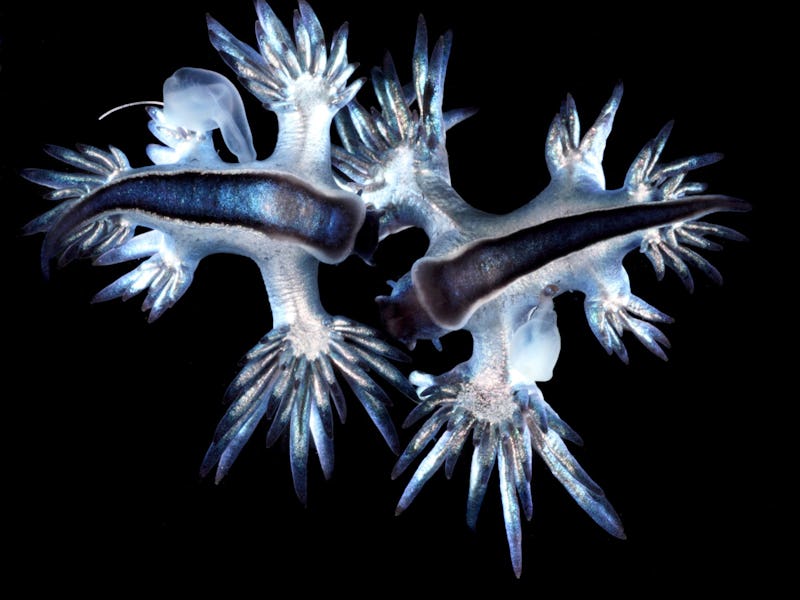These Vibrant Sea Creatures Are Thriving in the Great Pacific Garbage Patch
Life always finds a way.

The Great Pacific Garbage Patch isn’t an impassable, solid mass in the middle of the ocean, but rather a lively, swirling soup of discarded trash and microplastics that churn with the currents. It’s the product of our unwanted wares sucked into a gyre — a powerful, circulating system of ocean currents.
It might be tempting to think of this region of the Pacific as completely devoid of life, but recent studies show that sea creatures still find a way to thrive among the trash. Writing this week in the journal PLOS Biology, researchers report an abundance of surface-dwelling creatures called neustons living in the Great Pacific Garbage Patch.
The Portugese man o’ war Physalia is one of the many neustons that lives in the Great Pacific Garbage Patch.
The same gyres that cause garbage patches to collect may also play a vital role in transporting neustons, which are critical to the food web, across the seas. While this means they’re likely to be found in garbage patches, it’s still not clear how human pollution will change their way of life.
Abundant animals
Back in 2019, French swimmer Ben Lecomte swam hundreds of miles through the Great Pacific Garbage Patch. During the expedition, a team of scientists collected samples from the boat that accompanied Lecomte to see what, if anything, was living there.
The blue button jellyfish Porpita.
It didn’t take long into the swim for Lecomte and the accompanying researchers to see creatures of all shapes and sizes float by. They spotted plenty of neustons like the violet sea snail Janthina and the blue button jelly Porpita in the garbage patch.
And even larger animals like a sperm whale swam by, too, according to a 2019 report by Vice. Amidst pollution, the ecosystem was finding a way to thrive, thanks to the vital nutrients that neustons provide to many ocean creatures.
For the new study, the researchers broke down which neustons were most common in the Great Pacific Garbage Patch, based on data collected during Lecomte’s swim.
A bubble raft keeps the violet sea snail Janthina afloat at the surface.
Life finds a way
Five types of neustons were recorded in the study: Janthina, Porpita, the sea raft Velella, the Portuguese man o’ war Physalia, and the blue sea dragon Glaucus.
Every type was even more plentiful inside the Great Pacific Garbage Patch than outside of it. This showcases how the powerful gyres shape where they live, just as they cause garbage to collect in the same areas.
While no evidence has been found that neustons can consume plastic, correlations between high plastic concentration and three types of neustons show that they may interact with the garbage patch in ways we don’t know about yet.
Glaucus, known as the blue sea dragon, also lives in the garbage patch.
Other sea creatures like the rafting barnacle have been shown to consume microplastics regularly, though the health effects on these animals are unknown.
Knowing where neustons live can give insight into the health of the entire ecosystem. But the researchers caution that much more data is needed to understand the full extent of neuston populations in ocean gyres, and how plastic accumulation affects them.
The blue button jelly Velella.
What is clear from the new research is that the Great Pacific Garbage Patch is more than a famous accumulation of trash — it’s also home to many creatures.
“The ‘garbage patch’ is more than just a garbage patch. It is an ecosystem, not because of the plastic, but in spite of it,” said study author and marine biologist Rebecca Helm in a statement.
This article was originally published on